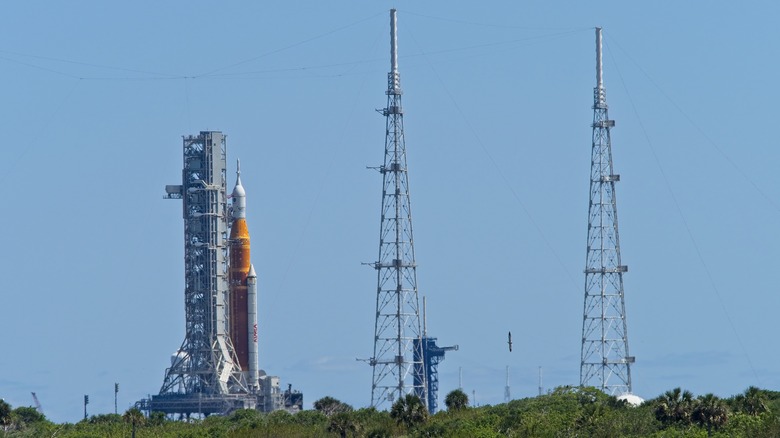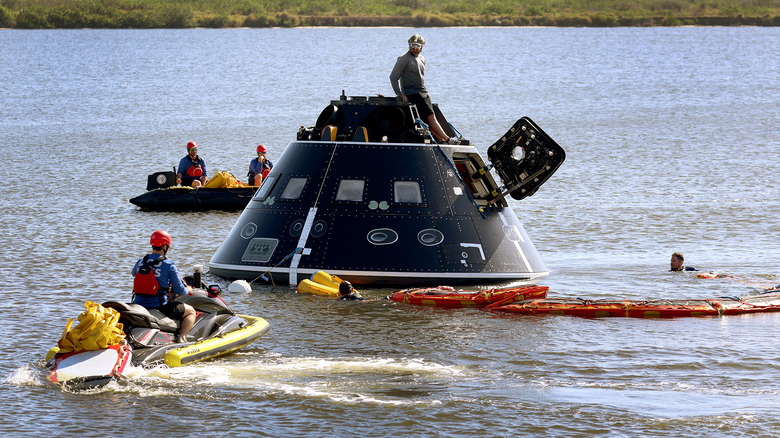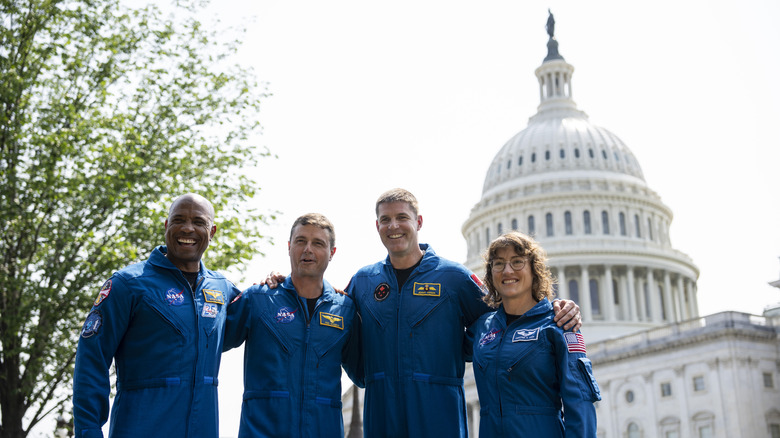Why NASA Delayed The Next Moon Landing
We live in an age of vast and rapid technological change, with developments in tech transforming the way we live time and again in recent decades. Personal computers, the internet and Wi-Fi, and handheld devices have all reshaped the way most people in the Western world work, play, socialize, and organize their lives. But despite the advances in hardware and software that underpin these new technologies, lunar travel remains a rare achievement in the history of humanity. Following the first Apollo 11 moon landings in 1969, there were just five more manned U.S. lunar landings, the last of which — Apollo 17 — took place more than half a century ago in 1972.
So space travel enthusiasts everywhere were thrilled when NASA announced in 2017 that it was planning a new bevy of lunar missions for the 21st century. The new missions include the first lunar landings by a woman astronaut and an astronaut of color and are planned as the first steps toward establishing the first base on the moon, which scientists hope will pave the way for space travel to Mars. Named the Artemis program, the new round of lunar exploration began with an unmanned test voyage in 2022 and was set to continue with four more Artemis missions — involving a total of three crewed lunar landings — beginning in November 2024. Unfortunately, in January 2024 NASA was forced to announce a revised timeline as the agency and its partners undertook more rounds of testing to ensure the safety of the crew.
Pioneering technology
The Artemis lunar missions see NASA partnering with some of the biggest tech firms on the planet. Elon Musk's Space X — a space travel company that has seen success in recent years with projects like Starlink — has been enlisted to provide cutting-edge aerospace technology, such as landing systems. As have the aerospace and arms companies Lockheed Martin and Blue Origin, owned by Amazon's Jeff Bezos. Another private company, Axiom Space, is charged with delivering the next generation of spacesuits for crewed missions.
Much of NASA's focus is related to the Orion module, which was planned to take a crew of four to the moon as soon as November 2024. However, a press release from the space agency has confirmed that the first uncrewed Artemis mission raised new issues regarding the technology planned for Artemis II after the craft's heat shield unexpectedly lost a layer of protective material. With the craft deemed to require greater testing, NASA decided to allow the mission's partners to further refine their technology.
"We are letting the hardware talk to us so that crew safety drives our decision-making. We will use the Artemis II flight test, and each flight that follows, to reduce risk for future Moon missions," read a statement from Catherine Koerner, associate administrator for the Exploration Systems Development Mission Directorate at NASA Headquarters in Washington, per the release.
Ambitious mission targets
It is no surprise that NASA is being cautious concerning the timeline of the Artemis lunar space missions. Though news outlets have often tended to report the new operations as a "return" to the moon and a replication of what the agency achieved more than half a century ago, the truth is that the Artemis program is looking to achieve a set of objectives humanity has never attempted before.
The Artemis II mission, for example, which has been delayed from November 2024 to September 2025, is a planned lunar flypast involving four crew members (pictured, in order): NASA astronauts Victor Glover, Reid Wiseman, Canadian Space Agency astronaut Jeremy Hansen, and Christina Koch, also of NASA. While the mission won't put any astronauts on the moon itself, it will represent the farthest that human beings have ever been from our planet, with the Orion module traveling nearly 9,000 kilometers (roughly 5,500 miles) further from the Earth than the moon. Later missions involve delivering modules for Gateway, a new innovative space station that will orbit the moon in the same way the International Space Station orbits Earth. Thankfully, NASA is confident that with the right testing, these ambitious targets are due to be met before the end of the decade, ushering in a new age of space exploration with an eye firmly on the red planet as a future human colony.


